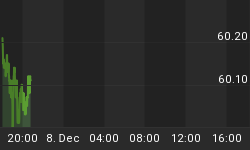I watch more financial TV than anyone I know and I can tell you that the topic de jure is: Inversion of the Yield Curve. Almost everyone is talking about it. Therefore, I thought that it is worthwhile to really clarify how best to use the yield-curve in predicting recessions.
Using the 10Y-3M-YD used in the Fed study and to be consistent with the study I have done a 3-month smoothing (90-day smoothing used in the Fed study) and as you will see from the attached graph in Fig. 1 that one would draw the same conclusions as without smoothing in: http://www.safehaven.com/showarticle.cfm?id=4681.
The most important thing to arrive at a conclusion that is valuable is to ask the correct question and then seek the answers provided by historical data. One thing that can be readily observed from the graph is that when 10Y-3M-YD is above +1.5% and rising the next recession is farther away in time than when 10Y-3M-YD is falling and gets below +1.0%. Also, the rise starts during a recession and in most cases exceeding +1.5% level before the recession is over.

At any given point in time there is always some probability of a recession in the future. When the 10Y-3M-YD is falling, that probability increases and the time period of the next recession gets closer. It can also be clearly observed that as 10Y-3M-YD gets close to 0.0%, while falling, the recessions get much closer in time and the probability of a recession within the next 12 months gets very high. And when 10Y-3M-YD gets to -0.5%, while falling, the recession is certain (within the constraints of the period covered) and very close in time.
The best question, therefore, to ask is: Once the yield curve inverts how far away is the next recession? And here is the answer:
10Y-3M-YD ------Beg. Next No. Months
Date For 0.0% ----Recession
Sep-66 -------------Dec-69 --------39 FALSE
Jul-69 --------------Dec-69 ----------5
Jun-73 -------------Nov-73 ----------5
Jan-79 -------------Jan-80 ----------12
Nov-80 ------------Jul-81 ------------8
Jun-89 -------------Jun-90 ---------12
Jul-00 --------------Mar-01 ----------7
Conclusion: With one exception, a recession has occurred within 12 months of the first inversion of the 10Y-3M Yield-Curve.
The next meaningful question to ask is: Once the Yield-Curve gets to -0.5% how far away is the next recession? And here is the answer:
10Y-3M-YD ------Beg. Next No. Months
Date For -0.5% ---Recession
Jul-73 --------------Nov-73 ---------4
Aug-79 -------------Jan-80 ----------5
Nov-80 -------------Jul-81 ----------8
Oct-00 --------------Mar-01 --------4
Conclusion: With no exception, a recession has occurred within 8 months, mostly within 5 months, of the first occurrence of the 10Y-3M Yield-Curve reaching -0.5%.
I hope that the above historical facts are useful in shedding light on the most important economic topic of the day.
















